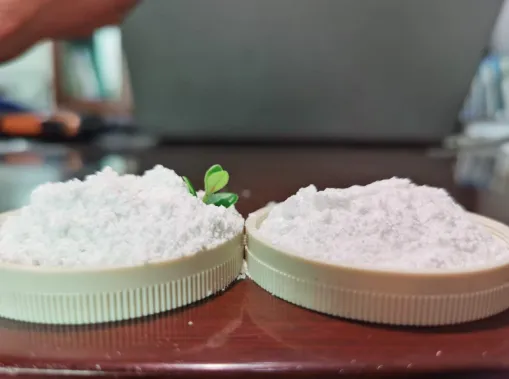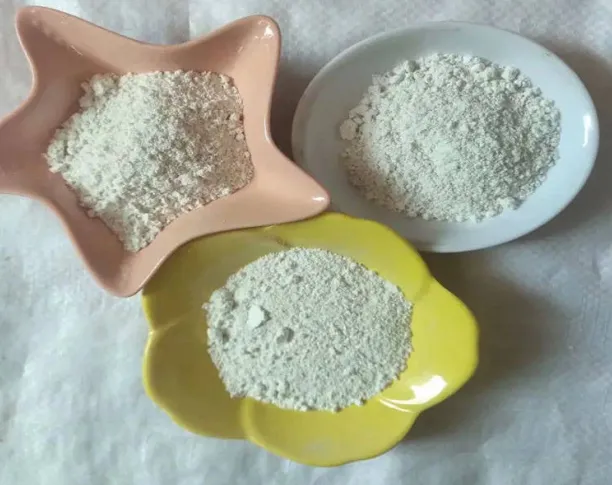What Is "industrial Monosodium Glutamate" Mica.
Mica powder, known as "industrial monosodium glutamate", is widely used. With the continuous development of technology and application market, and some new requirements have been put forward for the quality of mica powder, so synthetic mica powder has been developed. Compared with the natural mica powder processed by natural mica ore, and the synthetic mica powder synthesized by using a variety of raw materials through high temperature reaction and other chemical methods. What are the advantages and differences between them?

Natural mica powder and synthetic mica powder have differences in production methods, heat resistance and color transparency. As the name suggests, natural mica powder is made from natural mica ore after processing, retaining the original characteristics and composition of the ore. Its main components are SiO2 (about 49%) and Al2O3 (about 30%), while also containing K2O+Na2O (9%-11%) and so on. The synthetic mica powder (such as fluoroglogopicite powder), is the use of a variety of raw materials through high temperature reaction and other chemical methods synthetic, its composition and characteristics can be adjusted and optimized according to the need, the chemical formula is KMg3(AlSi3O10)F2, belongs to the monoclinic crystal system, is a typical layered silicate, relatively single and pure composition. The heat resistance of natural mica powder is generally 500-600℃, and some types, such as phlogopite, can reach 800℃. The heat resistance of synthetic mica powder is more excellent, and it can withstand high temperatures above 1200℃, and the melting point or crystallization temperature is about 1375±5. The transparency of natural mica powder is relatively low, and the color is diverse, including black, yellow, white, gray, green, brown and other colors, and may vary due to different ore types and processing methods. The color of synthetic mica powder is relatively single, usually colorless transparent or white, high whiteness, good optical performance, and high transmittance from ultraviolet to infrared band.

Natural mica powder and synthetic mica powder also have great differences in electrical insulation, mechanical properties, chemical stability, application range and cost. Natural mica powder has good electrical insulation, but the volume resistivity is lower than that of synthetic mica. Synthetic mica powder has better electrical insulation properties, high volume resistivity and stable dielectric constant, and is suitable for high performance electrical insulation materials. The hardness of natural mica powder is relatively low (2-3), and it has good elasticity and peeling property. The hardness of synthetic mica powder is higher (between 3 and 4), and the tensile strength and compressive strength are better than that of natural mica powder. Natural mica powder is stable in acid-base solution, but it is easy to decompose at high temperature. Synthetic mica powder is stable to acid and base at room temperature, but will be slowly corroded by sulfuric acid above 300℃. Better thermal stability, not easy to release gas. Natural mica powder is widely used in electrical appliances, welding rods, rubber, plastics, paper making, paint and other fields. Synthetic mica powder is mainly used in high-end electrical insulation materials, aviation, aerospace, national defense industry and other high-tech fields. Because synthetic mica powder needs to be produced through complex chemical processes, its production cost is usually higher than that of natural mica powder. Therefore, in the market, the price of synthetic mica powder is often higher than that of natural mica powder. However, with the continuous progress of production technology and the gradual emergence of scale effects, the price of synthetic mica powder is expected to gradually decrease.
In short, there are significant differences between natural mica powder and synthetic mica powder in production methods, color and appearance, performance characteristics, application fields, and price and cost. Synthetic mica powder is superior to natural mica powder in terms of high temperature resistance, transparency, electrical insulation, stability and mechanical properties, while natural mica powder has more advantages in resource acquisition, cost and color. When choosing which type of mica powder to use, you can consider the high temperature resistance of the required material, electrical insulation performance, transparency and color requirements, evaluate the mechanical strength and hardness of the required material, consider chemical stability and other different application scenarios and technical requirements to make a reasonable choice.
-
Transforming Surfaces with Mica-Enhanced Paints in Coatings and DecorationNewsJul.02,2025
-
The Ultimate Guide to Mica-Based Luminous Colors with Pearlescent PigmentNewsJul.02,2025
-
The Critical Role of Mica in Industrial Applications in Welding and Oil FieldsNewsJul.02,2025
-
Revolutionizing Automotive Aesthetics with Modified Plastics Pearlescent PigmentsNewsJul.02,2025
-
The Secret with Mica Powder for Cosmetics Behind Radiant, Natural MakeupNewsJul.02,2025
-
Enhancing Performance in Polymer Applications with Mica Powder for RubberNewsJul.02,2025
Products categories









